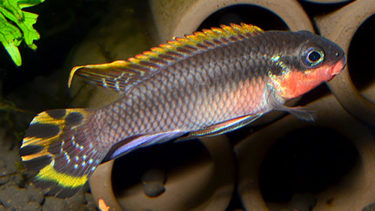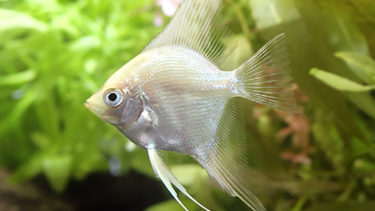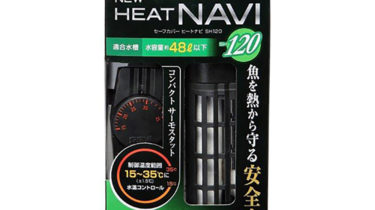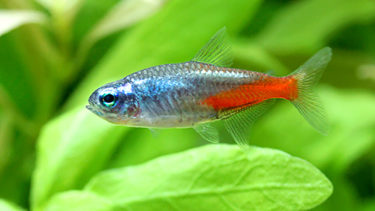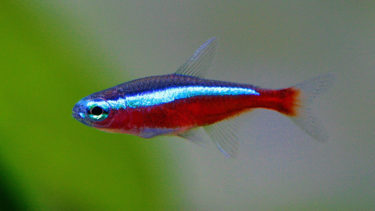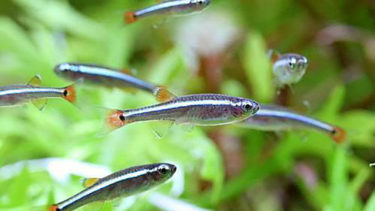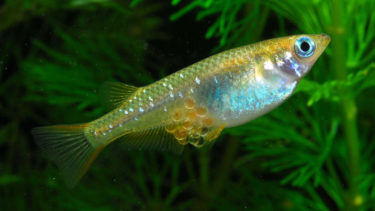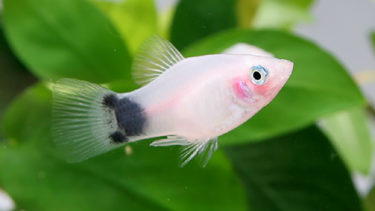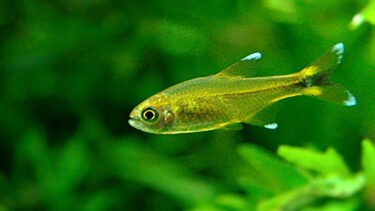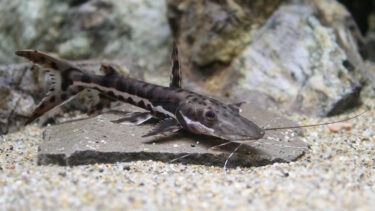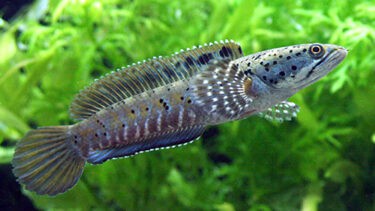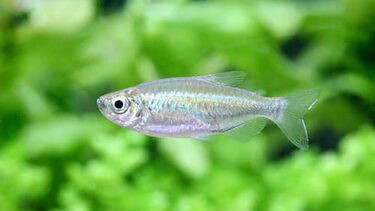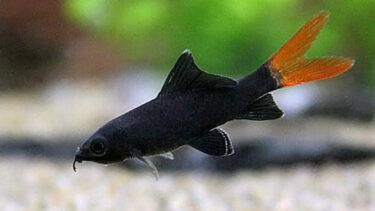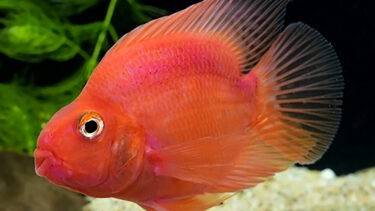Apistogramma trifasciata is a tropical fish of the Apistogramma genus of the Cichlidae family, with a dark blue dorsal fin and metallic blue-like coloration, native to the Federal Republic of Brazil, Plurinational State of Bolivia, and Republic of Paraguay in South America. In this article, I would like to explain in detail the characteristics of Apistogramma trifasciata and how to keep it.
What is Apistogramma Trifasciata?

Apistogramma trifasciata is a tropical fish belonging to the Apistogramma genus of the Cichlidae family. Apistogramma trifasciata originates from the rivers (Paraguay River, Guapole River, etc.) that flow through the Federal Republic of Brazil, Plurinational State of Bolivia, and Republic of Paraguay in South America.The dorsal fin of Apistogramma trifasciata has a dark blue and metallic blue coloration. In addition, it sparkles and becomes brilliant when exposed to blue light. Apistogramma trifasciata has long been a favorite among dwarf cichlids, the smallest species of cichlids.
Ramirezii are tropical fish of the family Cichlidae (sea bass) and genus Microgeophagus (microgeophagus), which are native to the Bolivarian Republic of Venezuela and Republic of Colombia in South America. There are also species with bright blue bodies, red, yellow, and other body colors. In this article, we will discuss the lami[...].
Pervicachromis taeniatus is a tropical fish of the Pervicachromis genus of the Cichlidae family of perchids, native to the Federal Republic of Nigeria and the Republic of Cameroon in West and Central Africa, with a beautiful blue and red pattern on its long, extended dorsal and anal fins. [...]
The angelfish is a tropical fish of the family Cichlidae (sea bass) in the genus Angelfish, which is native to the Amazon River that flows through the Republic of Peru, the Republic of Colombia, and the Federal Republic of Brazil in South America. [...].
How to keep Apistogramma trifasciata
Apistogramma trifasciata is easy to keep if you know how to keep it, so the difficulty level is moderate. The lifespan of Apistogramma trifasciata is approximately 1 to 2 years. Its body size is about 5 to 6 cm. However, both lifespan and body size vary depending on the environment in which they are kept and the food they are fed. They prefer slightly acidic to neutral water (especially soft water), with a pH range of 5.0 to 8.0. Apistogramma trifasciata is classified as a tropical fish, so if kept in Japan, it will require a heater in winter.
A heater is a device that maintains a constant water temperature. If you go to a specialty store that carries heaters, you will find a wide variety of types. Some people may be at a loss as to which one to choose. In this article, we would like to explain about such heaters [...]
Points to keep in mind when mixing swimmers
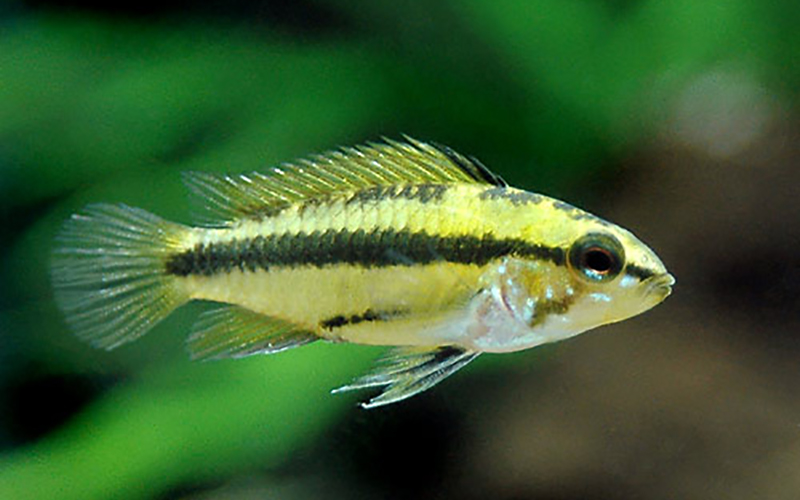
Apistogramma triphasquiatum is a cichlid, which means that it has a strong territoriality. Therefore, it is important to be aware that Apistogramma trifasciata often gets into fights with other cichlids over territorial disputes.Even a pair of Apistogramma trifasciata will chase each other around and the male may attack the female. Conversely, after the female has given birth to her young, the female will chase the male around in order to protect him. Therefore, we recommend that you put the females in another tank after they have spawned.However, Apistogramma trifasciata is one of the more docile of the cichlids, so it is basically unlikely to fight with non-cichlids.
The neon tetra is a tropical fish in the family Carassinae, and is a beautiful fish with a blue glow from its head to its tail fin. In this article, I would like to explain in detail the characteristics of the Neon Tetra and how to keep it. What is a Neon Tetra?
The cardinal tetra is a tropical fish of the family Carassinae of the order Carassinae that lives in the Negro and Amazon rivers in South America. It is a beautiful fish with a blue glow from its head to its tail fin. In this article, I would like to explain in detail the characteristics of the Cardinal Tetra and how to keep it. [...].
The redfin is a tropical fish of the carp family Tanichthys, which is native to Baiyunshan in Guangzhou, China. Its body color is mainly silver-gray with a dark blue line from the back of the eye to the base of the tail fin. In this article, we will explain in detail the characteristics of the redfin and how to keep it [...].
Points about spawning
Many people who keep Apistogramma trifasciata want to breed them. In keeping cichlids, it is often recognized as one of the pleasures of observing a series of breeding behaviors, such as the courtship of males, spawning and rearing of females, and the process of growth from fry to adults. First, let us discuss the differences between male and female Apistogramma trifasciata. Apistogramma trifasciata males have blue as their main body color, including the dorsal fin. In comparison, the female's body color is mainly yellow. The female's body coloration, especially during courtship, is characterized by a deep yellow coloration. It is recommended to enjoy this difference in body coloration.And the cichlid variety uses a special breeding method called "cave spawner". This method involves laying eggs in shady places that are difficult to find, such as under trees or stones. Therefore, when breeding Apistogramma trifasciata, it is important to create a good environment for them to lay their eggs, such as driftwood or commercially available egg-laying shelters. Outside of the breeding season, they may use these places as hiding places, so it is worth including them. Compared to other breeds, the compatibility of male and female Apistogramma trifasciata is very important, so there is no need to worry even if breeding fails.
Many people who keep killifish want them to spawn. However, not many people know about spawning and what they need to do to prepare for it. This time, we would like to explain the method of spawning and the points to be noted [...].
If you have kept goldfish for a long time, you may want to try to breed them. However, if goldfish spawning is not done with care, there is a high possibility that the goldfish will weaken. In this article, I would like to explain in detail the method and precautions for spawning. The time of spawningThe time of spawning of goldfish is [...]
What to look for when keeping Apistogramma trifasciata.

Apistogramma trifasciata can be a bit quirky in terms of how it is bred and how it is mixed with other species. However, it has many interesting aspects, such as its blue body color and unique breeding method.Apistogramma trifasciata has long been a popular cichlid variety. It has some characteristics and habits that are unique to the cichlids. If you are interested in Apistogramma Trifasciata, we recommend you to visit a specialty store and have a look.



